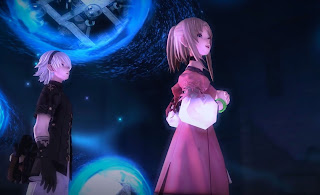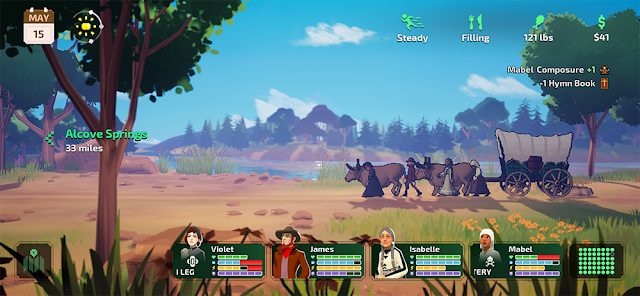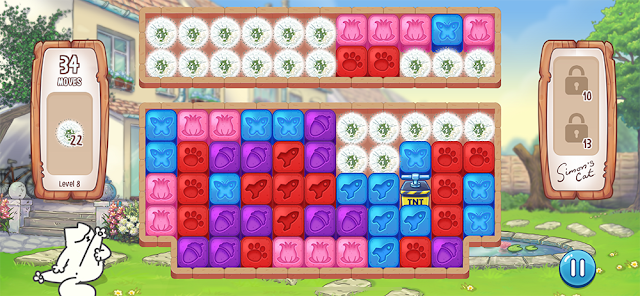Just before Easter, Apple dropped a big pile of new games on the Apple Arcade. Almost enough to count it as a “re-launch,” at it came at just the right time. I had been planning on ending the subscription, as I hadn’t really found a reason to play anything from the service for some months now. However, this drop includes three games that are absolutely brilliant, two of which are genuine game of the year contenders, and one of those two is very genuinely one of my favourite games of all time (potentially). So I’ll be hanging on to that subscription for some time to come. Well played, Apple.
This week you can look forward to a series of daily mini-reviews that will cover off a fair chunk of these Apple Arcade titles. I’m not going to do full reviews, as they’re effectively free-to-play, but I might write separate pieces on those few really elite games I mention above if time allows. Either way, I wanted to get down something on some of these titles as a statement of record, as I do think that this most recent drop has turned the Apple TV, when paired up with a Dualshock 4 controller (or whatever your preference is) into one heck of secondary console.
Each day I’ll review three titles from the most recent collection of releases. Today we have some casual puzzle action, a JRPG from some of the genre’s greatest legends, and an update of a game from 1971.
Fantasian
That’s not to suggest that Fantasian lacks its own identity, though. It features storybook sequences, which are vaguely reminiscent of what Sakaguchi did with Lost Odyssey back on the Xbox 360. These sequences need to carry a lot of the characterisation and emotion of the game, so it’s just as well that they’re beautifully written, and supported with some gorgeous hand-drawn art aesthetics. The combat has a fun twist on the standard menu-driven turn-based action, too. Line of sight matters in Fantasian – a burly fighter at the front of a row of enemies can protect those behind him and act as a shield wall, as physical attacks need to draw a direct line of sight to the enemy to be able to strike. However, magic attacks can be curved, so using your party in such a way that you can deal with different enemy configurations is core to the game’s strategy, and while it’s mechanically simple, it does add additional texture to what might have otherwise been seen as a little pedestrian.
There aren’t many games that are older than The Oregon Trail. The first version of it landed all the way back in 1971, as an early (perhaps the first) effort at edutainment in video games; you’d be playing a game, but at the same time you’d be learning something (in this case, the challenges and tribulations that the early colonisers of America went through as they headed out west). That original game is too old to play now, in so many ways. In addition to being entirely text-based, the game lacked the certain sensitivities towards native peoples that we now expect. But there have been many efforts to rebuild the game for a modern audience in the years since. Gameloft’s take on The Oregon Trail on Apple Arcade is a good ‘un.
The Oregon Trail is, in very simple terms, a resource management experience. As you trek across the great wilderness of America, your party of explorers slowly sheds health and hygiene and consumes food. Meanwhile, their wagon, which carries all their stuff, can start to damage and degrade, meaning that you might start losing that precious stuff off it. You need to make simple decisions, hunt, and otherwise battle against the attrition to arrive at key landmarks on the road, with the eventual goal being to reach Oregon itself. The Oregon Trail isn’t easy, by any means, and you’ll constantly be challenged to make tough trade-offs in the name of survival. There’s no medicine out in the wilderness, either, so heaven forbid if one of your characters should accidentally hurt themselves. And then there’s dysentery. You think COVID-19’s scary? Wait until your peeps start getting themselves sick with dysentery.
The puzzle board is going to be immediately familiar, as will the rules – tap on blocks that are joined up by at least one other block of the same colour, and the blocks will disappear. The more blocks of the same colour that are connected, the better the result, and if you start connecting up rows of five, six, ten or more blocks, you’ll also start getting powerups, which can clear large sections of the grid each time. The goal is to achieve a certain objective (clear away a certain number of one kind of colour block etc) within a certain number of turns. Because there’s no penalty for failure, though, this game never feels punitive in its challenge level.
We’ll be back tomorrow with the last of these Apple Arcade mini-reviews features (for now)!
– Matt S.
Editor-in-Chief
Find me on Twitter: @mattsainsb










Is there anyway to save little Mary in the Oregon trail? Seems like there should be!